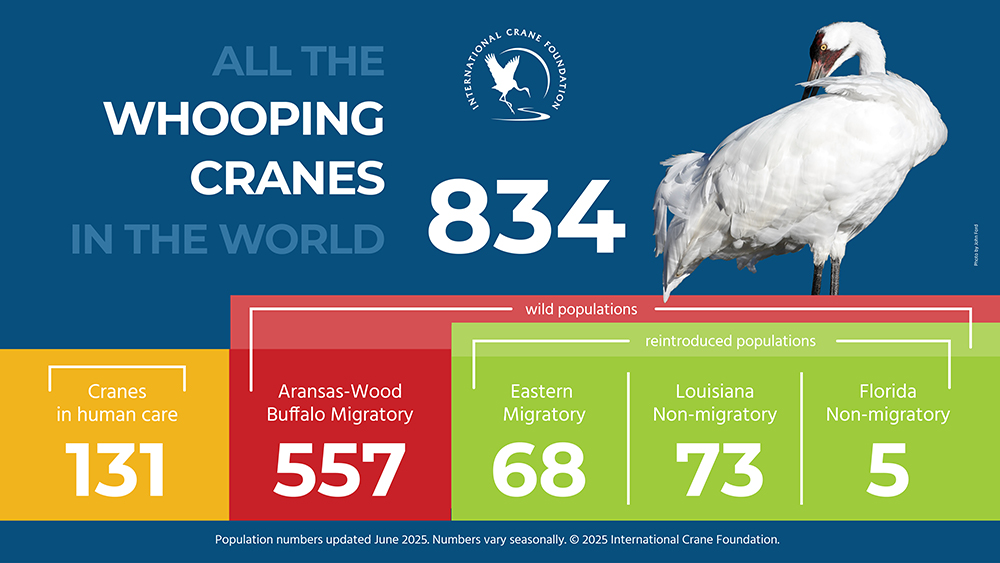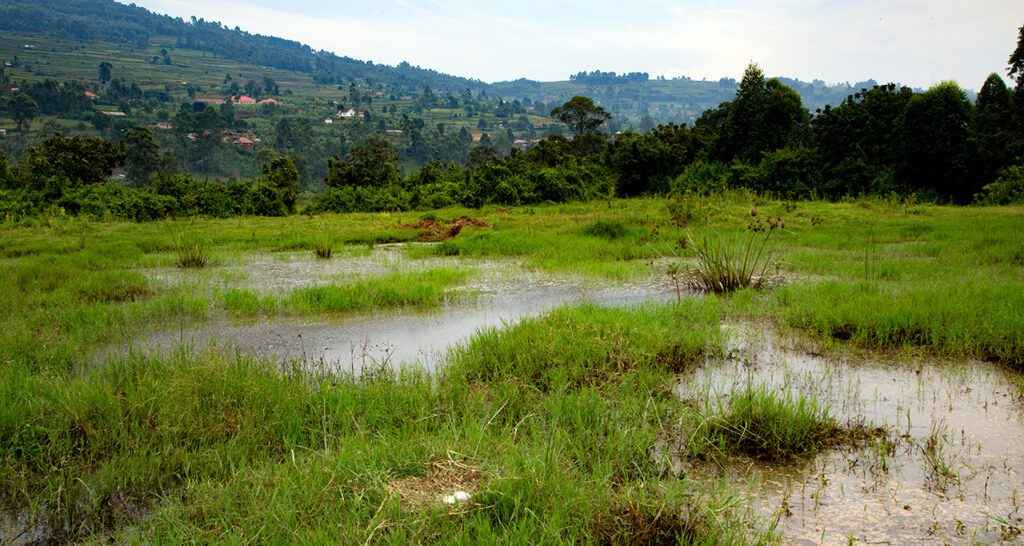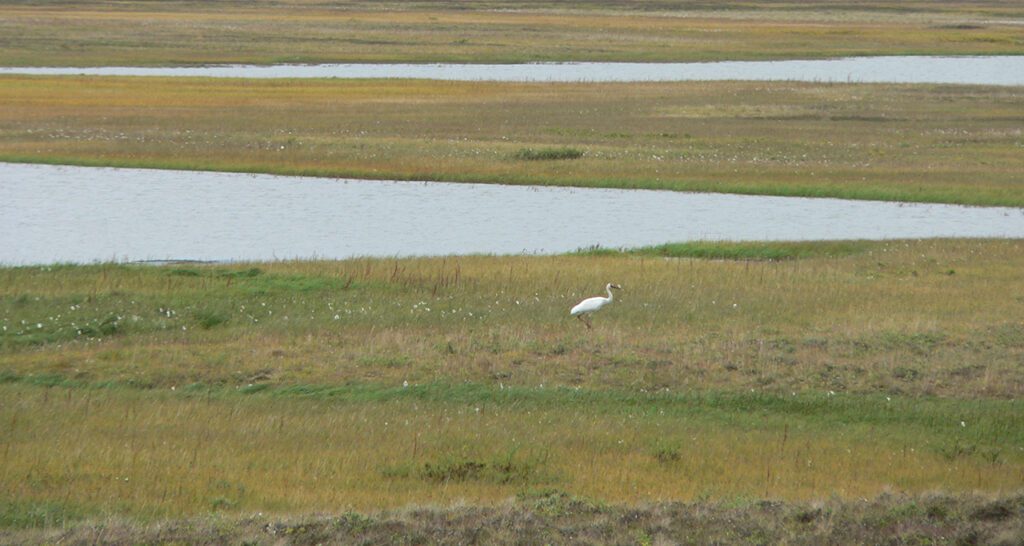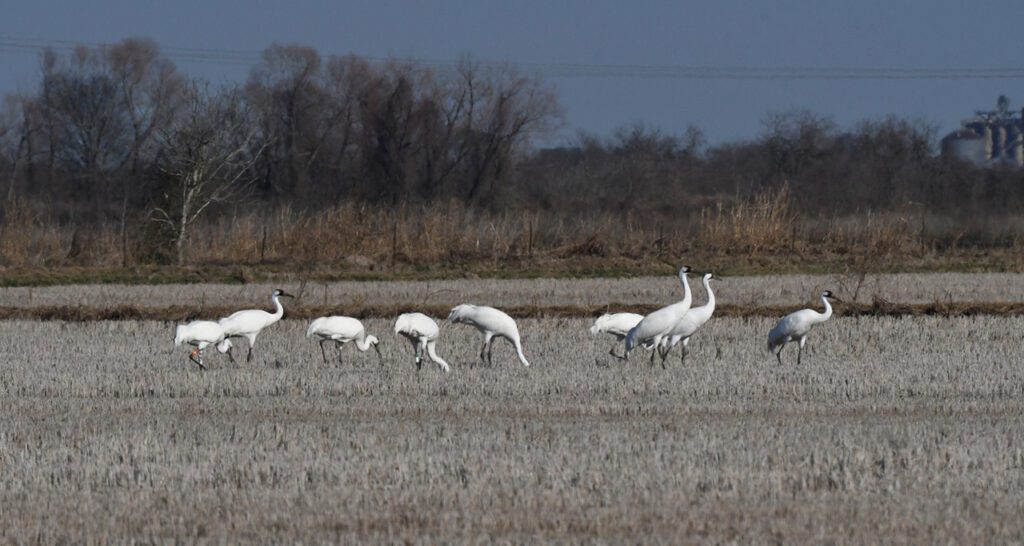Whooping Crane
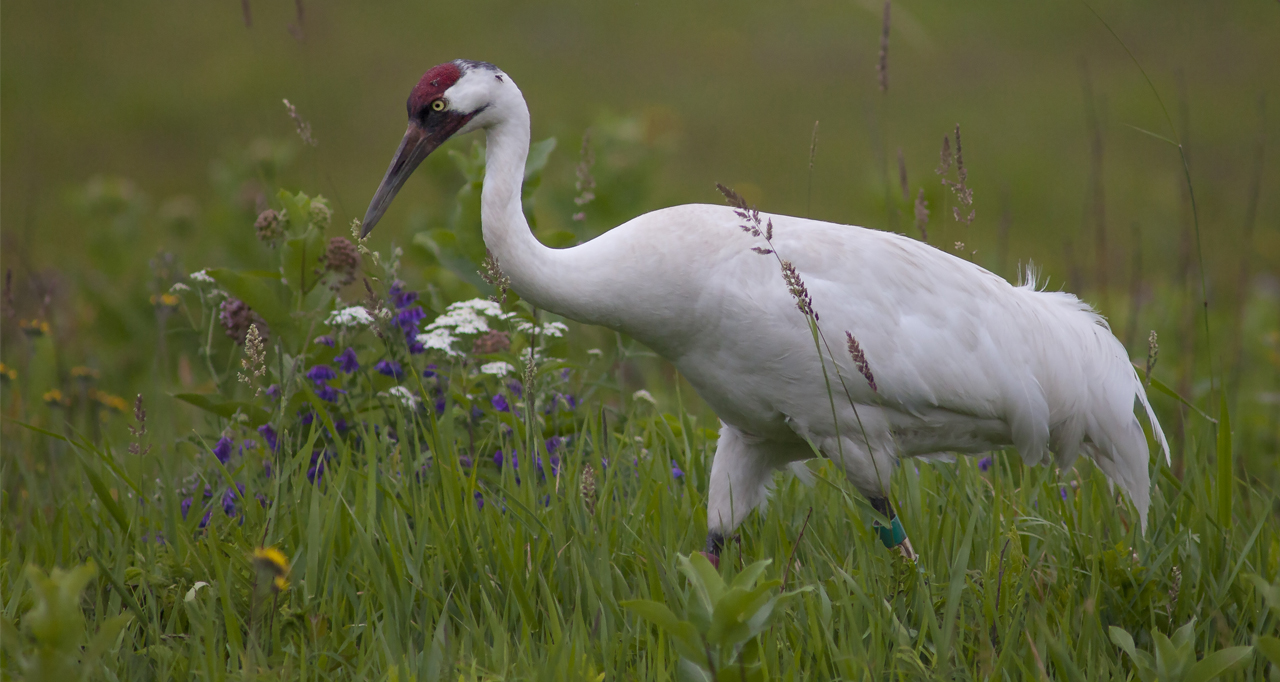
SPECIES: Grus americana
HEIGHT: ~ 152 cm, 5 ft
WEIGHT: ~ 7 – 8 kg; 15 – 17 lb
POPULATION: ~834 (captive and wild)
TREND: Increasing
STATUS: IUCN: EN; ESA: E, EX; Cites Appendix I; CMS II
Photo by Ted Thousand
IDENTIFICATION
Adults – red patch on forehead, black mustache and legs, black wing tips visible in flight; juveniles – cinnamon-brown feathers
Did you see a banded Whooping Crane? Click here to report your sighting.
Learn what to do if you observe a sick or injured crane here.
RANGE
Two distinct migratory populations summer in northwestern Canada and central Wisconsin and winter along the Gulf Coast of Texas and the southeastern United States, respectively. Non-migratory populations live in coastal Louisiana and central Florida.
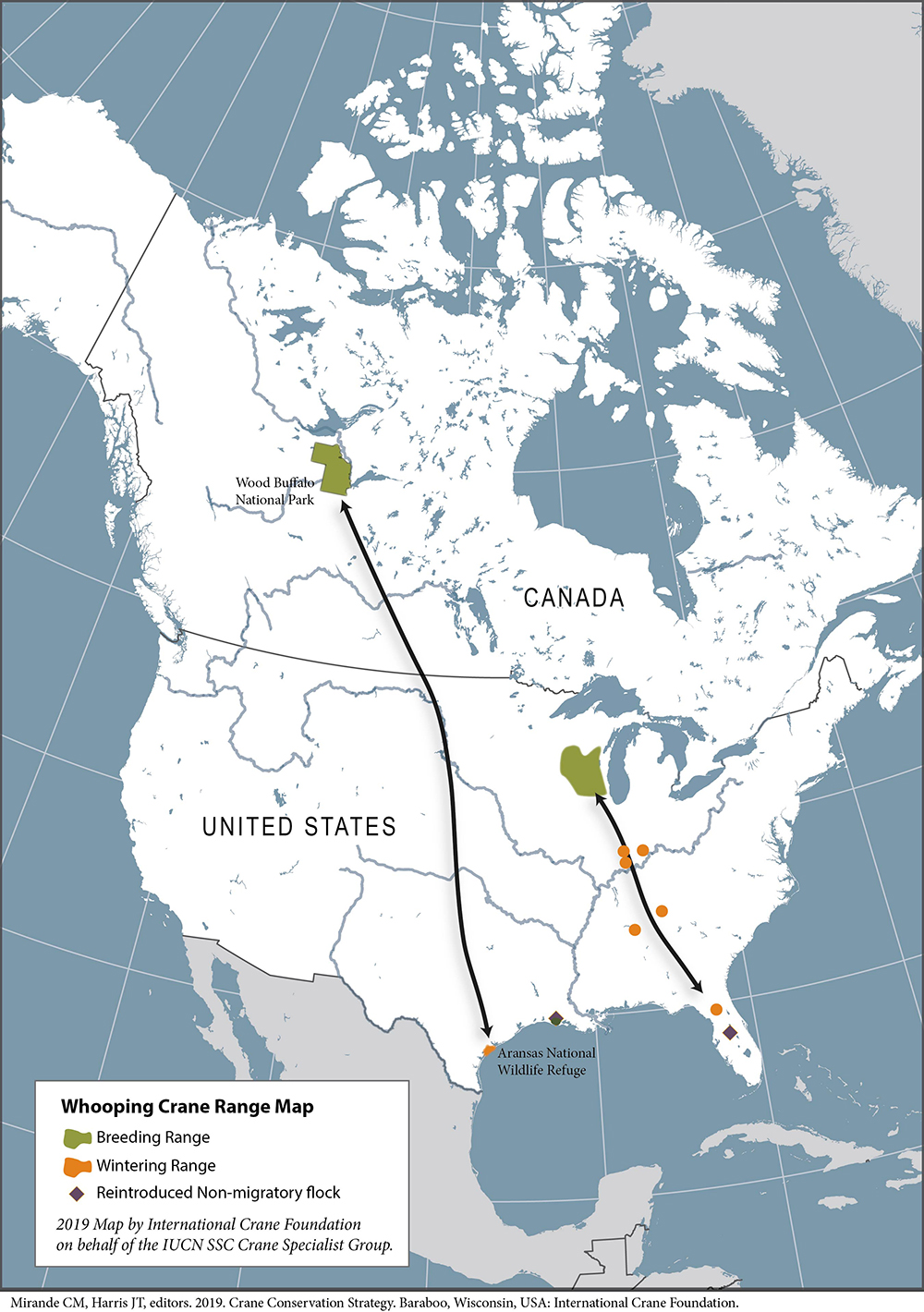
View the Where are the Whoopers interactive map to view the last known location of cranes in the Eastern Migratory Population. AND follow Whooping Crane 42-09 over two years as she successfully navigates the dangers and triumphs of life in the wild in our new story map.
Explore a Whooping Crane's JourneyDIET
Plant tubers, blue crabs, small mammals, amphibians, reptiles, insects.
CALL
Loud, whoop-whoop! Listen to Whooping Crane calls:
Contact Call | A soft, purring call expressing reassurance and location.
Guard Call | A sharp, single call expressing alarm.
Unison Call | A duet performed by a pair, to strengthen their bond and protect their territory.
THREATS
Loss of critical wetland habitat: Whooping Cranes use large areas with diverse habitats. Urban development, growing energy infrastructure, and woody plant encroachment fragment the landscape, limiting available wintering habitat.
Sea level rise: Along the coast of Texas, rising sea levels due to climate change threaten to drown critical habitat for the Endangered Whooping Cranes that winter in salt marshes.
Low genetic diversity: Severely low population numbers due to over harvest and habitat destruction in the 19th and 20th centuries, Whooping Cranes face a severe genetic bottleneck limiting recovery.
Power line collisions: Large energy infrastructure on the coast and in migratory pathways creates a potentially dangerous hurdle for flying birds.
Illegal shootings: Whether due to poachers or misidentification by hunters, illegal shootings can be major disruptors to a population’s recovery. In just one incident in 2021, five Whooping Cranes—approximately 1% the population—were killed by hunters in Oklahoma. Learn more about this incident here.
Threats to the Endangered Species Act: Did you know that the Whooping Crane was one of the first species to be protected by the Endangered Species Act? Federal rule changes continue to undermine this keystone of conservation success, which is credited with saving 99 percent of the species it protects, like Whooping Cranes.
OUR PLAN
With creativity and dedication, we are bringing the Whooping Crane back from the brink of extinction. Click on the links below to explore how we are protecting Whooping Cranes and learn how YOU can get involved:

Saving a Species
We estimate that in the mid-1800s there were around 1,200 to 1,500 Whooping Cranes in North America. By the early 1900s, Whooping Crane numbers had plummeted, and the species had disappeared from the heart of their historic breeding range in the north-central United States.
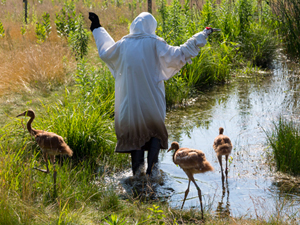
Breeding and Costume Rearing
What does it take to raise a crane in captivity? Experienced and dedicated staff, healthy cranes and time. When any species is first brought into captivity, it takes trial and error to figure out how to keep them healthy and reproduce successfully. However, when wild populations are at great risk, such as with the Whooping Crane, captive breeding is an essential part of saving an endangered species from extinction.
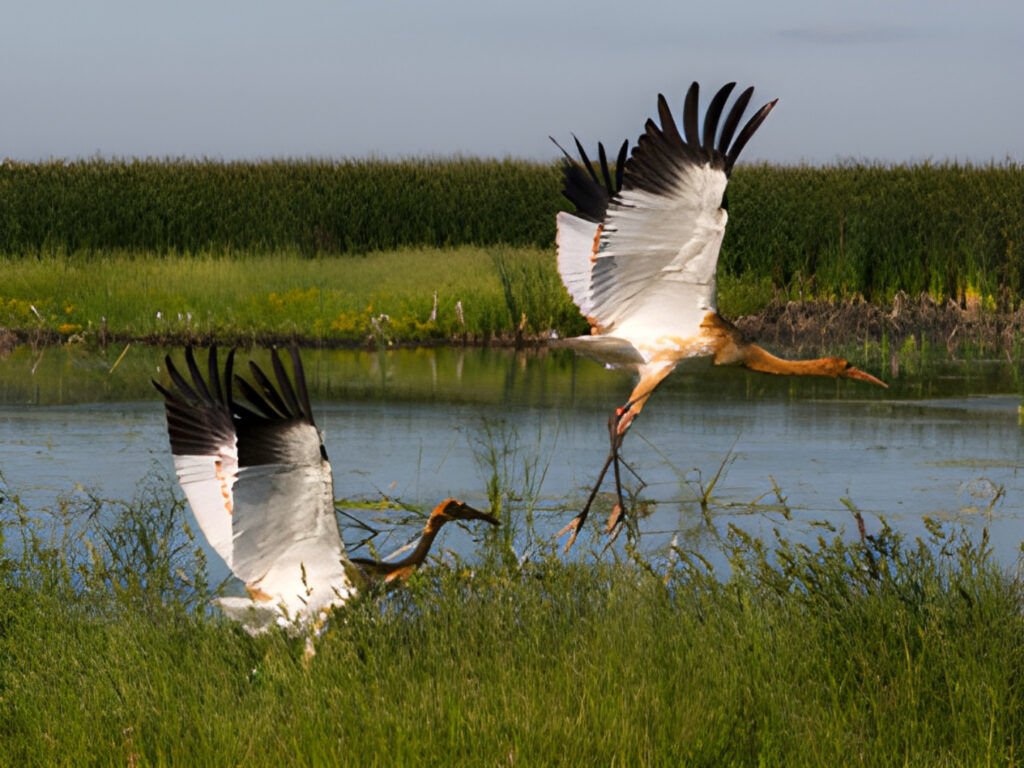
Reintroducing Whooping Cranes
Over the last nearly 50 years, the International Crane Foundation and our partners have developed a series of reintroduction projects to establish new, wild Whooping Crane populations in North America. The projects have varied in success, but as each project builds on previous attempts, we learn what techniques work most effectively.

Preserving Texas Coastal Habitats
The last naturally occurring Whooping Crane population migrates over 2,500 miles from their breeding grounds in western Canada to winter on the coastal wetlands in southeastern Texas. The survival of this critical population depends on securing freshwater from the Guadalupe River basin and conserving wetland habitats along the Texas Gulf Coast.

Raising Awareness
Our Mission: The International Crane Foundation works worldwide to conserve cranes and the ecosystems, watersheds and flyways on which they depend. America’s tallest bird, the Whooping Crane, is endangered and needs your help.
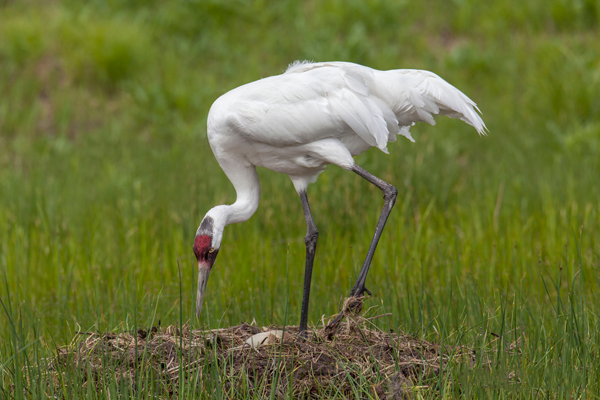
Land Management for Whooping Cranes
Discover methods you can implement on your land to provide high-quality habitat for Whooping Cranes along the U.S. Eastern Flyway.
Learn more about Whooping Cranes:
